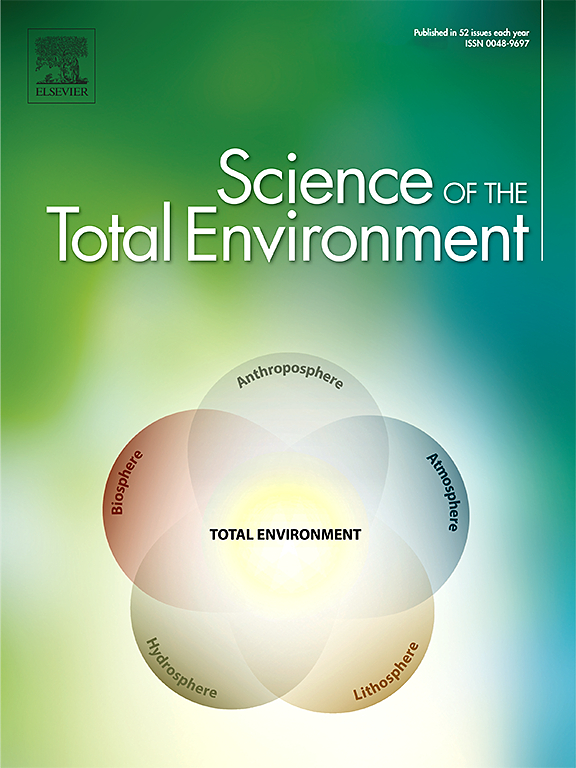Microalgae and livestock wastewater - A synergistic approach to environmental management
IF 8.2
1区 环境科学与生态学
Q1 ENVIRONMENTAL SCIENCES
引用次数: 0
Abstract
Livestock wastewater (LW) contains nutrients, pharmaceuticals, heavy metals, and pathogens, significantly contributing to the degradation of water quality. Effective regulation of untreated LW outflows is critical for safeguarding ecosystems and ensuring water security, especially as pollution-induced scarcity intensifies. LW pollution endangers drinking water sources and soil ecology and triggers zoonotic disease risks. Traditional treatment methods often depend on physical and chemical processes that can be expensive, generate carbon emissions, lead to unstable outcomes, and contribute to the waste of recyclable materials, contradicting the principles of sustainable development. Advanced technologies like membrane filtration and oxidation processes, though effective, face economic and operational barriers, particularly for smallholder farmers. Phycoremediation can be effective in treating LW, as it has shown its ability to remove nutrients, heavy metals, and pharmaceuticals from wastewater, and it is feasible to operate in farms with the potential of value-added biomass generation. This review synthesizes recent advancements in microalgae-based LW treatment, focusing on mechanistic pollutant removal pathways, pilot-scale studies, and biomass valorization. It highlights the critical role of microalgae in nutrient recovery, heavy metal and pharmaceutical removal and explores sustainable deployment models, contributing to both environmental protection and bioeconomy growth.

微藻和牲畜废水-环境管理的协同方法
牲畜废水(LW)含有营养物质、药物、重金属和病原体,对水质的退化有重大影响。有效监管未经处理的低硫废水流出对于保护生态系统和确保水安全至关重要,尤其是在污染导致的稀缺性加剧的情况下。水污染危害饮用水源和土壤生态,并引发人畜共患疾病风险。传统的处理方法往往依赖于物理和化学过程,这些过程可能昂贵,产生碳排放,导致不稳定的结果,并导致可回收材料的浪费,与可持续发展原则相矛盾。膜过滤和氧化处理等先进技术虽然有效,但面临经济和操作障碍,特别是对小农而言。植物修复可以有效地处理LW,因为它已经显示出从废水中去除营养物质、重金属和药物的能力,并且在具有增值生物质发电潜力的农场中操作是可行的。本文综述了基于微藻的污水处理的最新进展,重点介绍了机械污染物去除途径、中试研究和生物质增值。它强调了微藻在养分回收、重金属和药物去除方面的关键作用,并探索了可持续的部署模式,为环境保护和生物经济增长做出贡献。
本文章由计算机程序翻译,如有差异,请以英文原文为准。
求助全文
约1分钟内获得全文
求助全文
来源期刊

Science of the Total Environment
环境科学-环境科学
CiteScore
17.60
自引率
10.20%
发文量
8726
审稿时长
2.4 months
期刊介绍:
The Science of the Total Environment is an international journal dedicated to scientific research on the environment and its interaction with humanity. It covers a wide range of disciplines and seeks to publish innovative, hypothesis-driven, and impactful research that explores the entire environment, including the atmosphere, lithosphere, hydrosphere, biosphere, and anthroposphere.
The journal's updated Aims & Scope emphasizes the importance of interdisciplinary environmental research with broad impact. Priority is given to studies that advance fundamental understanding and explore the interconnectedness of multiple environmental spheres. Field studies are preferred, while laboratory experiments must demonstrate significant methodological advancements or mechanistic insights with direct relevance to the environment.
 求助内容:
求助内容: 应助结果提醒方式:
应助结果提醒方式:


